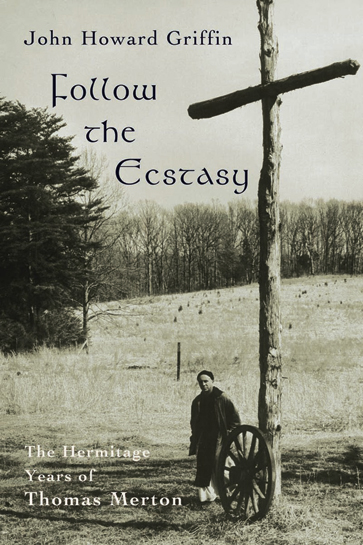Overview
In 1969, one year after Thomas Merton's tragic (and suspicious) death, John Howard Griffin was invited to write a biography of America's most famous monk, a monk who strangely had become a best-selling theologian. The result was Follow the Ecstasy: The Hermitage Years of Thomas Merton (1983). Both Merton and Griffin were converts to Catholicism, and they had become fast friends during Griffin’s occasional retreats to the Trappist Abbey of Gethsemani where Merton was cloistered. As Robert Bonazzi writes in his Foreword, "With natural humility and intense spirituality, they taught each other by example and silence." Merton and Griffin were both photographers as well as writers. Griffin wrote about Merton's painting and photography in A Hidden Wholeness: The Visual World of Thomas Merton (1970). They also shared a fascination with the French theologian Jacques Maritain, as well as French modernists Pierre Reverdy, George Braque, and Albert Camus. Griffin fell ill before he could finish his biography of Merton, and the mantle of official biographer passed to Michael Mott, author of The Seven Mountains of Thomas Merton, an essential compendium of the monk's life. Yet Follow the Ecstasy gets closer to the man—a portrait made by one who shared not only personal histories and interests with Merton, but an "intuitive perspective of solitude."Author Biography
Known primarily as the author of the modern classic, Black Like Me, John Howard Griffin (1920-1980) was a true Renaissance man. Having fought in the French Resistance and been a solo observer on an island in the South Pacific during World War II, he became a critically-acclaimed novelist and essayist, a remarkable photographer and musicologist, and a dynamic lecturer and teacher. On October 28, 1959, after a decade of blindness and a remarkable and inexplicable recovery, John Howard Griffin dyed himself black and began an odyssey of discovery through the segregated American South. The result was Black Like Me, arguably the single most important documentation of 20th century American racism ever written. Because of Black Like Me, Griffin was personally vilified, hanged in effigy in his hometown, and threatened with death for the rest of his life. Griffin's courageous act and the book it generated earned him international respect as a human rights activist. Griffin worked with the Rev. Dr. Martin Luther King, Dick Gregory, Saul Alinsky, and NAACP Director Roy Wilkins during the Civil Rights era. He taught seminars at the University of Peace with Nobel Peace Laureate Father Dominique Pire, and delivered hundreds of lectures worldwide. Earlier, during a decade of blindness (1947-1957), he wrote novels. His 1952 bestseller, The Devil Rides Outside was a test case in a controversial censorship trial that was settled in his favor by the US Supreme Court. Later in his life, Griffin was also recognized for his magnificent black & white photographic portraits, which were featured in his photographic books A Hidden Wholeness: The Visual World of Thomas Merton (Griffin was also Thomas Merton's biographer) and Jacques Maritain: Homage in Words and Pictures.

